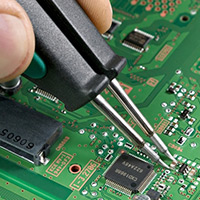

The Rising Trend of Patterned Glass An In-Depth Look at Prices
In recent years, the interior design industry has witnessed a significant surge in the popularity of patterned glass. This unique material not only adds an element of sophistication to spaces but also offers various functional benefits. As the demand for patterned glass continues to grow, its price dynamics have become a topic of interest for both consumers and industry professionals alike. In this article, we will explore the factors influencing the price of patterned glass and its implications for the market.
Understanding Patterned Glass
Patterned glass is a type of decorative glass that features various textures and designs, achieved through techniques such as embossing, etching, or sandblasting. It serves multiple purposes, ranging from enhancing privacy to diffusing light, making it an ideal choice for residential and commercial applications alike. Its aesthetic appeal is hard to overlook; the intricate designs can transform a mundane space into an artistic statement.
Factors Influencing Price
1. Material Quality The type of glass used significantly affects the price. High-quality tempered glass or low-iron glass, which offers superior clarity and strength, tend to be more expensive. The manufacturing process also plays a role; glass produced under stringent quality control standards commands higher prices.
2. Design Complexity The intricacy of the pattern has a direct correlation with the cost. Simple patterns, such as linear designs, are relatively inexpensive to produce. In contrast, intricate designs that involve detailed etching or multi-layered textures require advanced techniques and specialized equipment, which drives up the price.
3. Production Techniques The methods used to create patterned glass can also influence pricing. Traditional techniques like hand-blowing or hand-cutting can be labor-intensive, leading to higher market prices. Conversely, modern mass production methods can reduce costs, but they might compromise on uniqueness and design complexity.

4. Custom vs. Standard Designs Custom-designed patterned glass typically comes at a premium because it caters to specific client needs and preferences. Standardized designs, which are produced in bulk, can be more cost-effective, appealing to a broader market segment.
5. Market Demand and Trends The popularity of patterned glass has increased as more people seek unique design elements in their spaces. This rising demand can lead to fluctuating prices, particularly as more companies enter the market. Additionally, global trends in architecture and interior design influence local prices.
Comparing Prices Across Markets
The price of patterned glass can vary widely depending on geographic location, availability, and local market conditions. In larger metropolitan areas where demand is high, prices tend to be elevated compared to rural areas with lower demand. Furthermore, online retailers may offer competitive pricing due to lower overhead costs, while local suppliers might charge more for exclusive services, such as installation.
The Future of Patterned Glass
As the trends towards eco-friendly materials and smart home technologies grow, the patterned glass market is likely to evolve. Innovations in glass manufacturing, such as energy-efficient coatings or smart glass that changes opacity, may also impact pricing strategies.
In conclusion, the world of patterned glass is both intricate and transparent, reflecting broader design trends while embodying unique aesthetic qualities. Understanding the price factors associated with patterned glass is essential for consumers and businesses alike as they navigate this appealing segment of the market. With continual developments on the horizon, the future of patterned glass is certainly one to watch.